Passive Source Localization Using Compressive Sensing
Abstract
1. Introduction
2. Theoretical Background
2.1. Data Model
- The sources are stationary random processes and uncorrelated with each other. A number of independent snapshots are available.
- Both the signal and noise processes follow a zero-mean complex Gaussian distribution, and the noise is independent of the signal processes.
- The source motion effect is ignored, and random environmental variation is stationary.
2.2. The Traditional MFP Methods
3. Sparse Reconstruction-Based MFP with a Single Snapshot
4. Sparse Reconstruction-Based MFP with Multiple Snapshots
4.1. Related Work
4.2. CS-R Method
4.3. Restricted Isometry Property for Sparse Recovery
4.4. Comparison between the CS-R Method and the Bartlett Method
4.5. Pre-Locating
5. Simulation Results
5.1. CS-R vs. Bartlett
5.2. Source Location Estimation Comparison in a Complex Environment
5.3. Performance Analysis with Environmental Mismatch
- In Figure 7a, we present plots of the the Mean Square Error (MSE) of each method versus SNR. The search for the source range location is between 5 and 15 km, and the depth is between 1 and 102 m.
- Figure 7b gives the evaluation results of the probability of localization error (Pe) versus SNR. The search for range is between 5 and 15 km, and the depth is between 1 and 102 m.
5.4. Peak to Background Ratio Analysis
6. Experimental Results
7. Conclusions
Author Contributions
Funding
Acknowledgments
Conflicts of Interest
References
- Baggeroer, A.; Kuperman, W.; Mikhalevsky, P. An overview of matched field methods in ocean acoustics. IEEE J. Ocean. Eng. 1993, 18, 401–424. [Google Scholar] [CrossRef]
- Baggeroer, A.B.; Kuperman, W.A.; Schmidt, H. Matched field processing: Source localization in correlated noise as an optimum parameter estimation problem. J. Acoust. Soc. Am. 1988, 83, 571–587. [Google Scholar] [CrossRef]
- Tolstoy, A. Applications of matched-field processing to inverse problems in underwater acoustics. Inverse Probl. 2000, 16, 1655–1662. [Google Scholar] [CrossRef]
- Capon, J. High-resolution frequency-wavenumber spectrum analysis. Proc. IEEE 1969, 57, 1408–1418. [Google Scholar] [CrossRef]
- Zoltowski, M.D.; Kautz, G.; Chou, S. Multiply-constrained MVDR matched field processing with a-posteriori constraints for enhanced robustness to mismatch. In Proceedings of the Conference Record of the Twenty-Fifth Asilomar Conference on Signals, Systems & Computers, Pacific Grove, CA, USA, 4–6 November 1991; pp. 242–246. [Google Scholar]
- Baggeroer, A.; Cox, H. Passive sonar limits upon nulling multiple moving ships with large aperture arrays. In Proceedings of the Conference Record of the Thirty-Third Asilomar Conference on Signals, Systems, and Computers, Pacific Grove, CA, USA, 24–27 October 1999; pp. 1560–1564. [Google Scholar]
- Song, H.; Kuperman, W.; Hodgkiss, W.; Gerstoft, P.; Kim, J.S. Null broadening with snapshot-deficient covariance matrices in passive sonar. IEEE J. Ocean. Eng. 2003, 28, 250–261. [Google Scholar] [CrossRef]
- Baggeroer, A.B. Why did applications of mfp fail, or did we not understand how to apply MFP. In Proceedings of the 1st International Conference and Exhibition on Underwater Acoustics, Corfu, Greece, 23–28 June 2013; pp. 41–49. [Google Scholar]
- Donoho, D. Compressed sensing. IEEE Trans. Inf. Theory 2006, 52, 1289–1306. [Google Scholar] [CrossRef]
- Xu, W.; Shi, H.; Zhang, H. Sparse-reconstruction-based high resolution beamforming and its application to multi-beam systems. In Proceedings of the IEEE OCEANS, Yeosu, Korea, 21–24 May 2012. [Google Scholar]
- Malioutov, D.; Cetin, M.; Willsky, A. A sparse signal reconstruction perspective for source localization with sensor arrays. IEEE Trans. Signal Process. 2005, 53, 3010–3022. [Google Scholar] [CrossRef]
- Donoho, D.L.; Elad, M.; Temlyakov, V.N. Stable recovery of sparse overcomplete representations in the presence of noise. IEEE Trans. Inf. Theory 2006, 52, 6–18. [Google Scholar] [CrossRef]
- Nagahara, M.; Quevedo, D.E.; Ostergaard, J. Packetized predictive control for rate-limited networks via sparse representation. In Proceedings of the 2012 IEEE 51st Annual Conference on Decision and Control (CDC), Maui, HI, USA, 10–13 December 2012. [Google Scholar]
- Nagahara, M.; Quevedo, D.E.; Nesic, D. Maximum hands-off control and L_1 optimality. In Proceedings of the 2013 IEEE 52nd Annual Conference on Decision and Control (CDC), Florence, Italy, 10–13 December 2013. [Google Scholar]
- Trzasko, J.; Manduca, A. Highly undersampled magnetic resonance image reconstruction via homotopic-minimization. IEEE Trans. Med. Imaging 2009, 28, 106–121. [Google Scholar] [CrossRef]
- Lustig, M.; Donoho, D.; Pauly, J.M. Sparse MRI: The application of compressed sensing for rapid MR imaging. Magn. Reson. Med. 2007, 58, 1182–1195. [Google Scholar] [CrossRef]
- Yan, Q.; Li, L. Kernel sparse tracking with compressive sensing. IET Comput. Vis. 2014, 8, 305–315. [Google Scholar] [CrossRef]
- Xu, J.P.; Pi, Y.N.; Cao, Z.J. Bayesian compressive sensing in synthetic aperture radar imaging. IET Radar Sonar Navig. 2012, 6, 2–8. [Google Scholar] [CrossRef]
- Li, H.; Wang, C.; Wang, K.; He, Y.; Zhu, X. High resolution range profile of compressive sensing radar with low computational complexity. IET Radar Sonar Navig. 2015, 9, 984–990. [Google Scholar] [CrossRef]
- Ender, J.H. On compressive sensing applied to radar. Signal Process. 2010, 90, 1402–1414. [Google Scholar] [CrossRef]
- Zhu, X.X.; Bamler, R. Super-resolution power and robustness of compressive sensing for spectral estimation with application to spaceborne tomographic SAR. IEEE Trans. Geosci. Remote Sens. 2012, 50, 247–258. [Google Scholar] [CrossRef]
- Fannjiang, A.C.; Strohmer, T.; Yan, P. Compressed remote sensing of sparse objects. SIAM J. Imaging Sci. 2010, 3, 595–618. [Google Scholar] [CrossRef]
- Wu, D.; Zhu, W.-P.; Swamy, M. Compressive sensing-based speech enhancement in non-sparse noisy environments. IET Signal Process. 2013, 7, 450–457. [Google Scholar] [CrossRef]
- Starck, J.-L.; Elad, M.; Donoho, D.L. Image decomposition via the combination of sparse representations and a variational approach. IEEE Trans. Image Process. 2005, 14, 1570–1582. [Google Scholar] [CrossRef]
- Lian, Q.S.; Chen, S.Z. Image reconstruction for compressed sensing based on the combined sparse image representation. Acta Autom. Sin. 2010, 36, 385–391. [Google Scholar] [CrossRef]
- Cotter, S.F.; Rao, B.D. Sparse channel estimation via matching pursuit with application to equalization. IEEE Trans. Commun. 2002, 50, 374–377. [Google Scholar] [CrossRef]
- Zeng, W.J.; Xu, W. Fast estimation of sparse doubly spread acoustic channels. J. Acoust. Soc. Am. 2012, 131, 303–317. [Google Scholar] [CrossRef] [PubMed]
- Xie, J.; Wang, Z.; Ji, Z.; Quan, T. High-resolution ocean clutter spectrum estimation for shipborne HFSWR using sparse-representation-based MUSIC. IEEE J. Ocean. Eng. 2015, 40, 546–557. [Google Scholar] [CrossRef]
- Wright, J.; Yang, A.Y.; Ganesh, A.; Sastry, S.S.; Ma, Y. Robust face recognition via sparse representation. IEEE Trans. Pattern Anal. Mach. Intell. 2009, 31, 210–227. [Google Scholar] [CrossRef] [PubMed]
- Proença, H.; Neves, J.; Briceño, J. Face recognition: Handling data misalignments implicitly by fusion of sparse representations. IET Comput. Vis. 2014, 9, 216–225. [Google Scholar] [CrossRef]
- Mantzel, W.; Romberg, J.; Sabra, K. Compressive matched-field processing. J. Acoust. Soc. Am. 2012, 132, 90–102. [Google Scholar] [CrossRef]
- Xenaki, A.; Gerstoft, P.; Mosegaard, K. Compressive beamforming. J. Acoust. Soc. Am. 2014, 136, 260–271. [Google Scholar] [CrossRef]
- Yan, H.; Xu, J.; Long, T.; Zhang, X. Underwater acoustic matched field imaging based on compressed sensing. Sensors 2015, 15, 25577–25591. [Google Scholar] [CrossRef]
- Wang, R.; Liu, G.; Kang, W.; Li, B.; Ma, R.; Zhu, C. Bayesian compressive sensing based optimized node selection scheme in underwater sensor networks. Sensors 2018, 18, 2568. [Google Scholar] [CrossRef]
- Candes, E.; Wakin, M. An introduction to compressive sampling. IEEE Signal Process. Mag. 2008, 25, 21–30. [Google Scholar] [CrossRef]
- Fortunati, S.; Grasso, R.; Gini, F.; Greco, M.; Lepage, K.D. Single-snapshot [doa] estimation by using compressed sensing. EURASIP J. Adv. Signal Process. 2014, 2014, 120–131. [Google Scholar] [CrossRef]
- Gerstoft, P.; Xenaki, A.; Mecklenbrauker, C.F. Multiple and single snapshot compressive beamforming. J. Acoust. Soc. Am. 2015, 138, 2003–2014. [Google Scholar] [CrossRef]
- Irshad, M.J.; Zhao, H.; Xu, W. High resolution matched field source localization based on sparse-reconstruction. In Proceedings of the IEEE China Ocean Acoust, Harbin, China, 9–11 January 2016. [Google Scholar]
- Bucker, H.P. Use of calculated sound fields and matched field detection to locate sound sources in shallow water. J. Acoust. Soc. Am. 1976, 59, 368–373. [Google Scholar] [CrossRef]
- Cox, H.; Zeskind, R.M.; Owen, M. Robust adaptive beamforming. IEEE Trans. Acoust. Speech, Signal Process. 1987, 35, 1365–1376. [Google Scholar] [CrossRef]
- Xu, W. Performance Bounds on Matched-Field Methods for Source Localization and Estimation of Ocean Environmental Parameters. Ph.D. Thesis, MIT, Cambridge, MA, USA, 2001. [Google Scholar]
- Baggeroer, A.B.; Schmidt, H. Parameter estimation theory bounds and the accuracy of full field inversions. In Full Field Inversion Methods in Ocean and Seismo-Acoustics; Springer: Dordrecht, The Netherlands, 1995. [Google Scholar]
- Gemba, K.L.; Hodgkiss, W.S.; Gerstoft, P. Adaptive and compressive matched field processing. J. Acoust. Soc. Am. 2017, 141, 92–103. [Google Scholar] [CrossRef] [PubMed]
- Xu, W. Compressive Sensing for Sparse Approximations: Constructions, Algorithms, and Analysis. Ph.D. Thesis, California Institute of Technology, Pasadena, CA, USA, 2009. [Google Scholar]
- Pope, G. Compressive Sensing: A Summary of Reconstruction Algorithms. Ph.D. Thesis, Swiss Federal Institute of Technology Zurich, Department of Computer Science, Zurich, Switzerland, 2009. [Google Scholar]
- Candes, E.J.; Tao, T. Decoding by linear programming. IEEE Trans. Inf. Theory 2005, 51, 4203–4215. [Google Scholar] [CrossRef]
- Chen, S.S.; Donoho, D.L.; Saunders, M.A. Atomic decomposition by basis pursuit. SIAM J. Sci. Comput. 1998, 20, 33–61. [Google Scholar] [CrossRef]
- Dai, W.; Milenkovic, O. Subspace pursuit for compressive sensing signal reconstruction. IEEE Trans. Inf. Theory 2009, 55, 2230–2249. [Google Scholar] [CrossRef]
- Needell, D.; Tropp, J. CoSaMP: Iterative signal recovery from incomplete and inaccurate samples. Appl. Comput. Harmon. Anal. 2009, 26, 301–321. [Google Scholar] [CrossRef]
- Candès, E.J.; Romberg, J.; Tao, T. Robust uncertainty principles: Exact signal reconstruction from highly incomplete frequency information. IEEE Trans. Inf. Theory 2006, 52, 489–509. [Google Scholar] [CrossRef]
- Baraniuk, R.; Davenport, M.; DeVore, R.; Wakin, M. A simple proof of the restricted isometry property for random matrices. Constr. Approx. 2008, 28, 253–263. [Google Scholar] [CrossRef]
- Candès, E.J. The restricted isometry property and its implications for compressed sensing. C. R. Math. 2008, 346, 589–592. [Google Scholar] [CrossRef]
- Tropp, J.A. Just relax: Convex programming methods for identifying sparse signals in noise. IEEE Trans. Inf. Theory 2006, 52, 1030–1051. [Google Scholar] [CrossRef]
- Cai, T.T.; Xu, G.; Zhang, J. On recovery of sparse signals via L1 minimization. IEEE Trans. Inf. Theory 2009, 55, 3388–3397. [Google Scholar] [CrossRef]
- Morozov, V.A. On the solution of functional equations by the method of regularization. Soviet Math. Dokl. 1966, 7, 414–417. [Google Scholar]
- Jenkins, R. Quantitative X-ray Spectrometry; CRC Press: Boca Raton, FL, USA, 1995. [Google Scholar]
- Dahl, P.H.; Zhang, R.; Miller, J.H.; Bartek, L.R.; Peng, Z.; Ramp, S.R.; Zhou, J.X.; Chiu, C.-S.; Lynch, J.F.; Simmen, J.; et al. Overview of results from the Asian Seas International Acoustics experiment in the East China Sea. IEEE J. Ocean. Eng. 2004, 29, 920–928. [Google Scholar] [CrossRef]
- Chen, Z.; Xu, W. Joint passive detection and tracking of underwater acoustic target by beamforming-based bernoulli filter with multiple arrays. Sensors 2018, 18, 4022. [Google Scholar] [CrossRef]

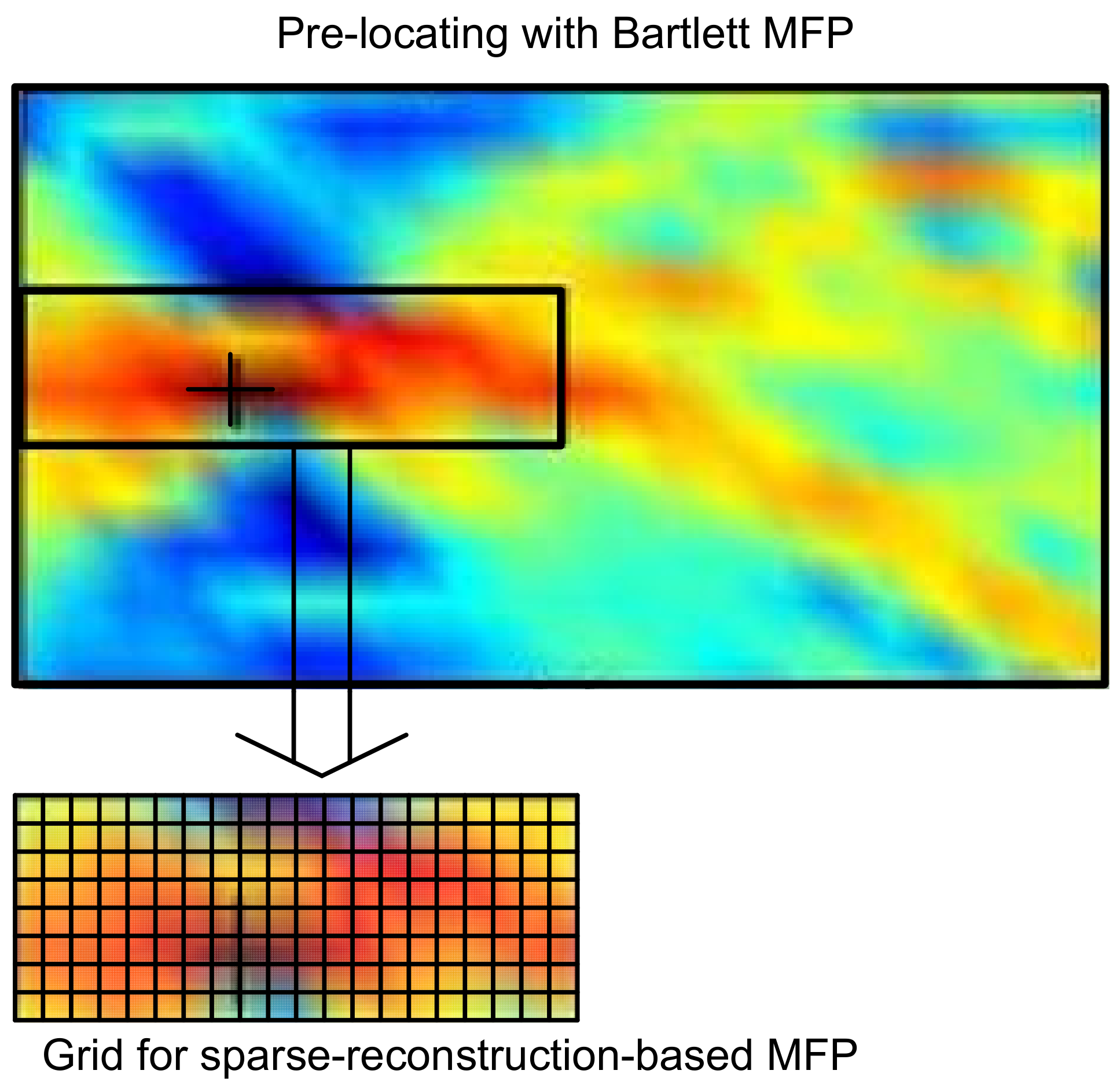
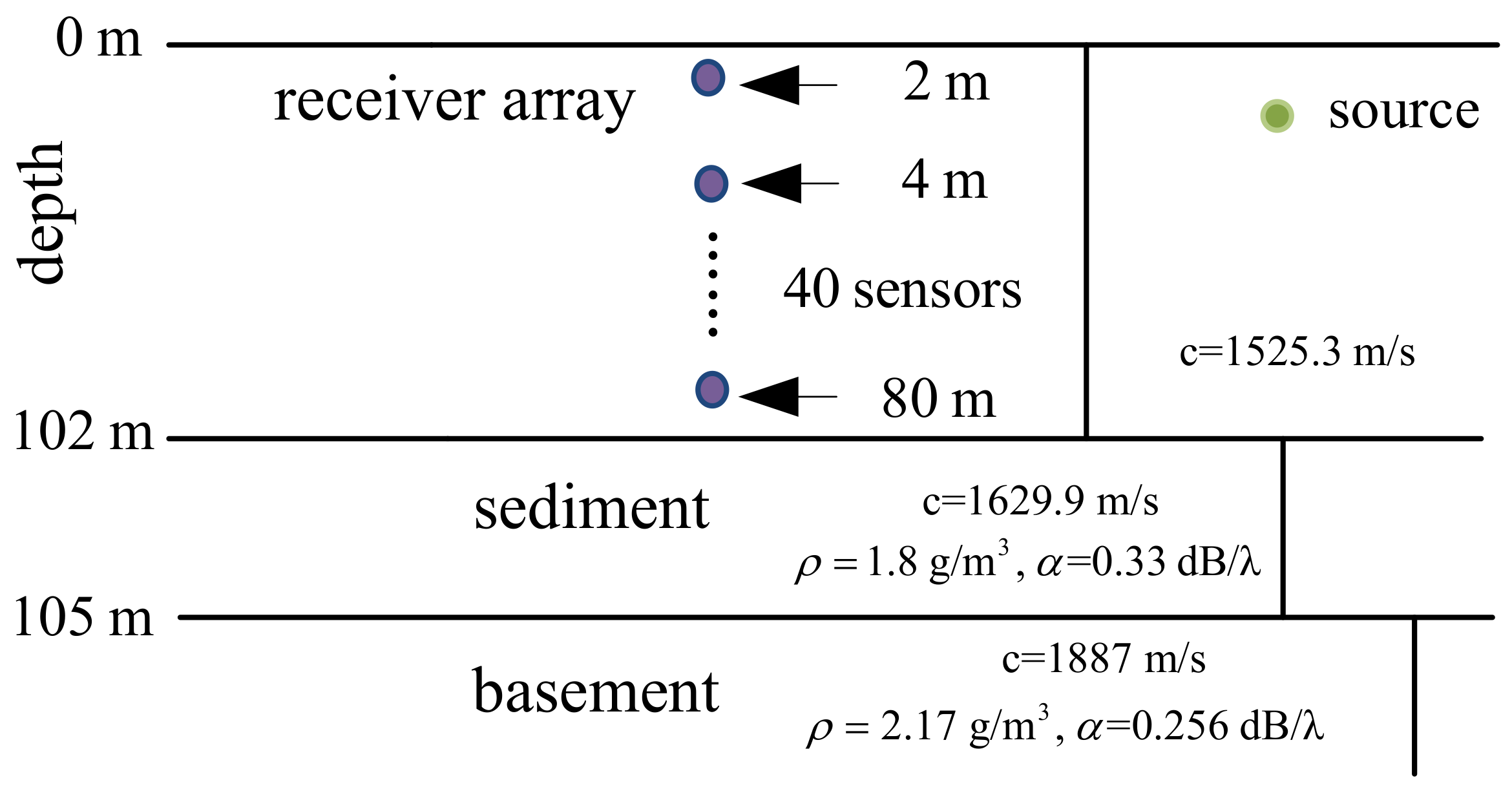
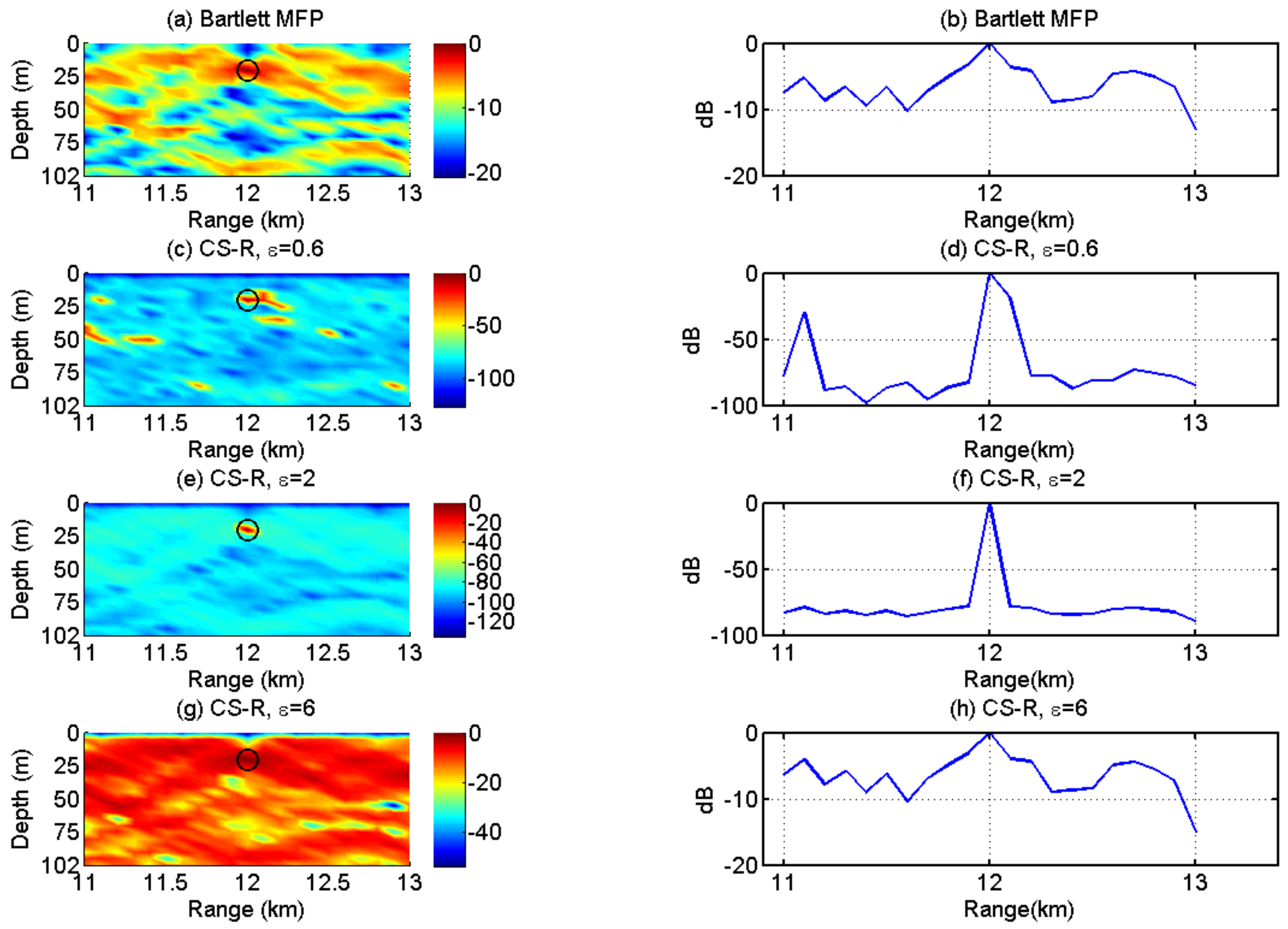
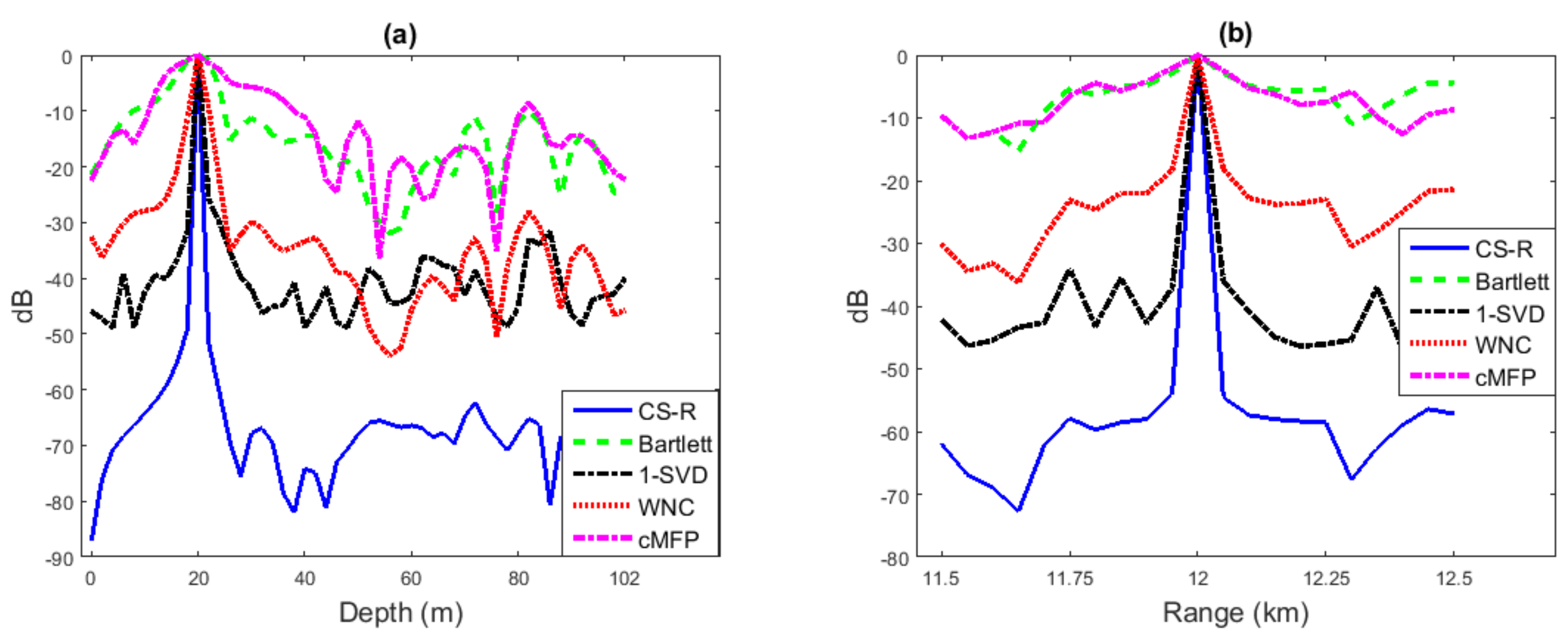
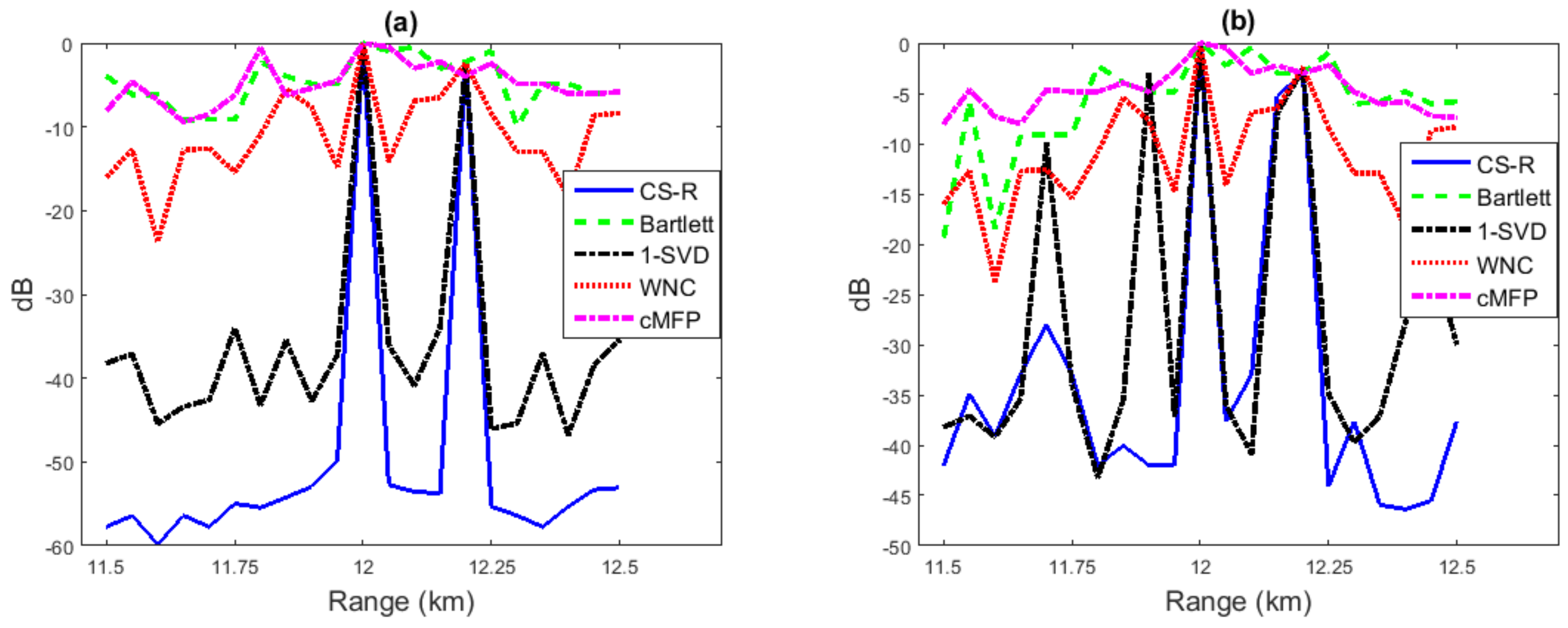
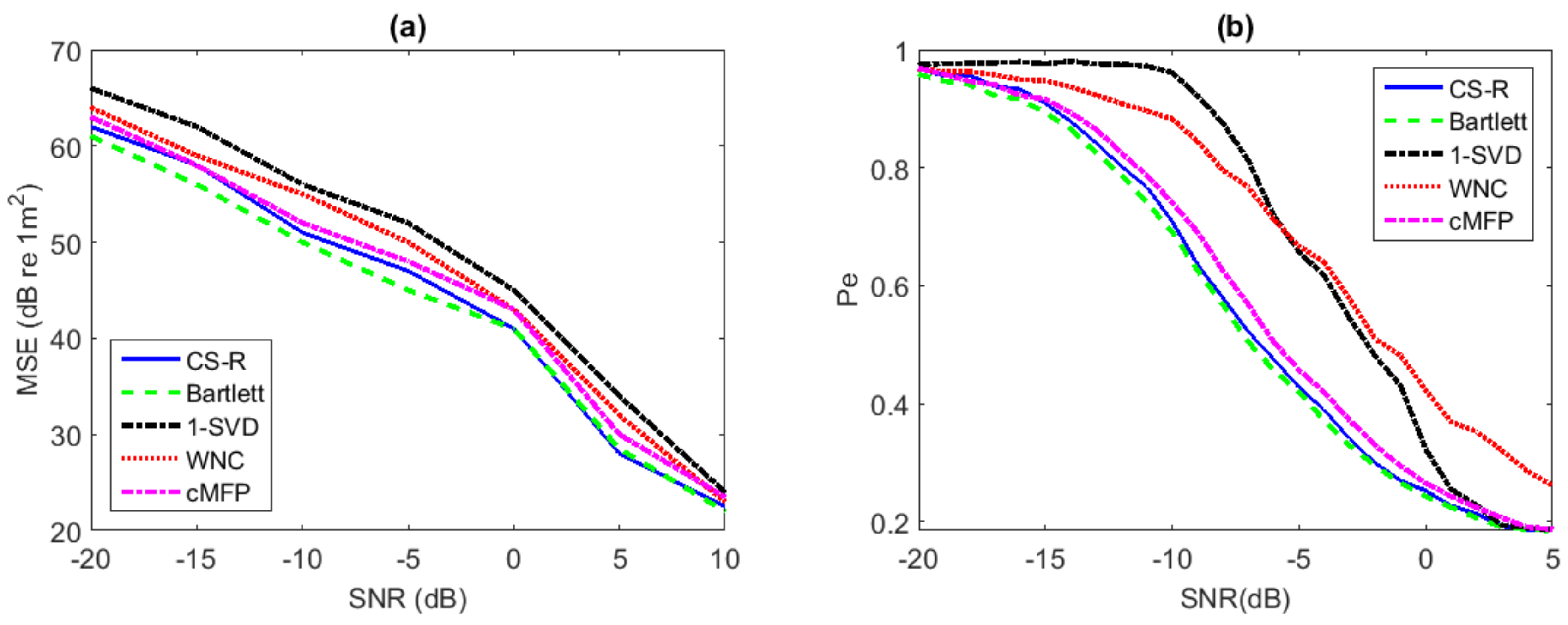
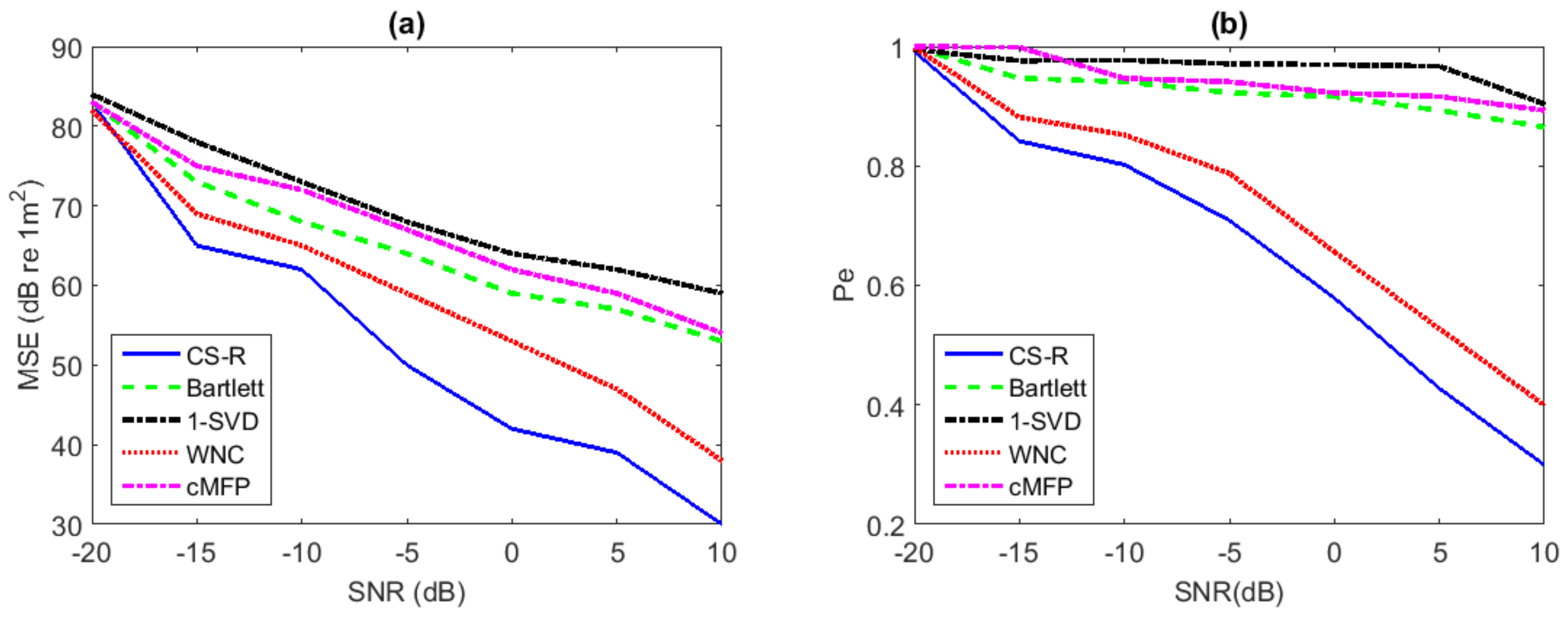
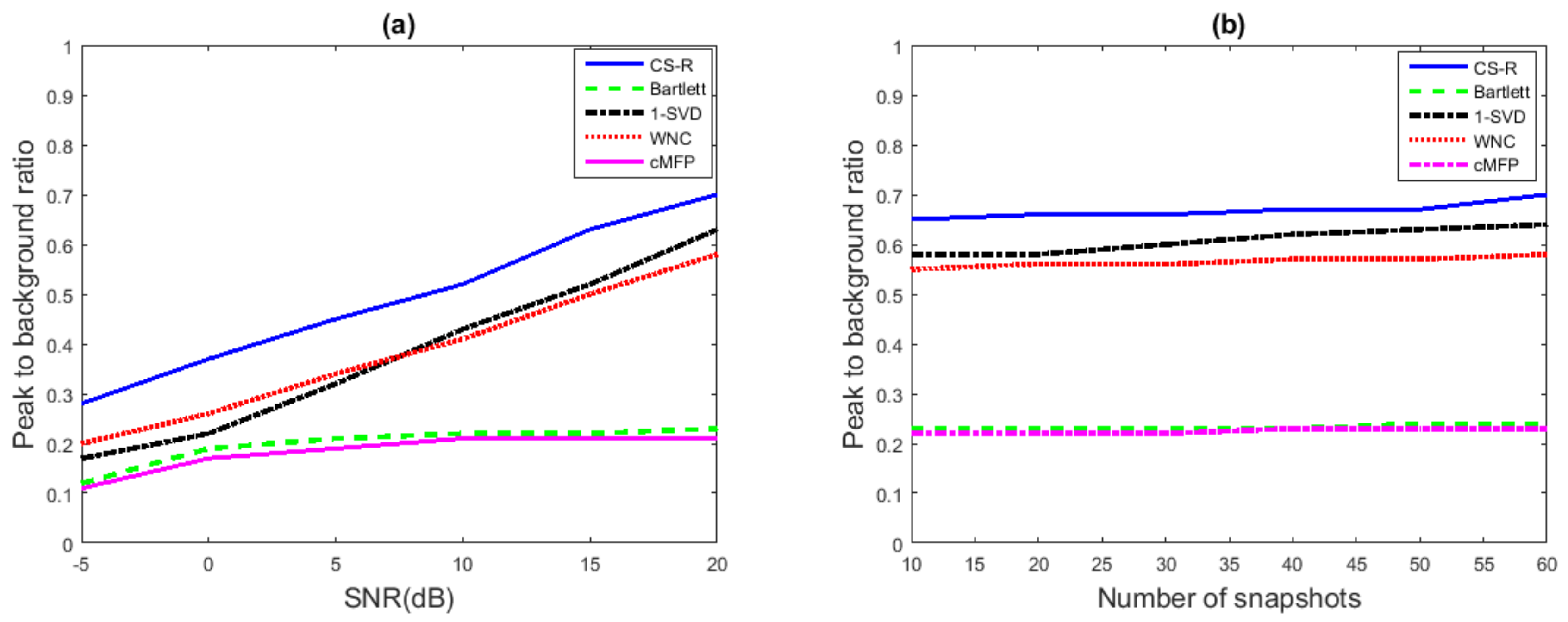
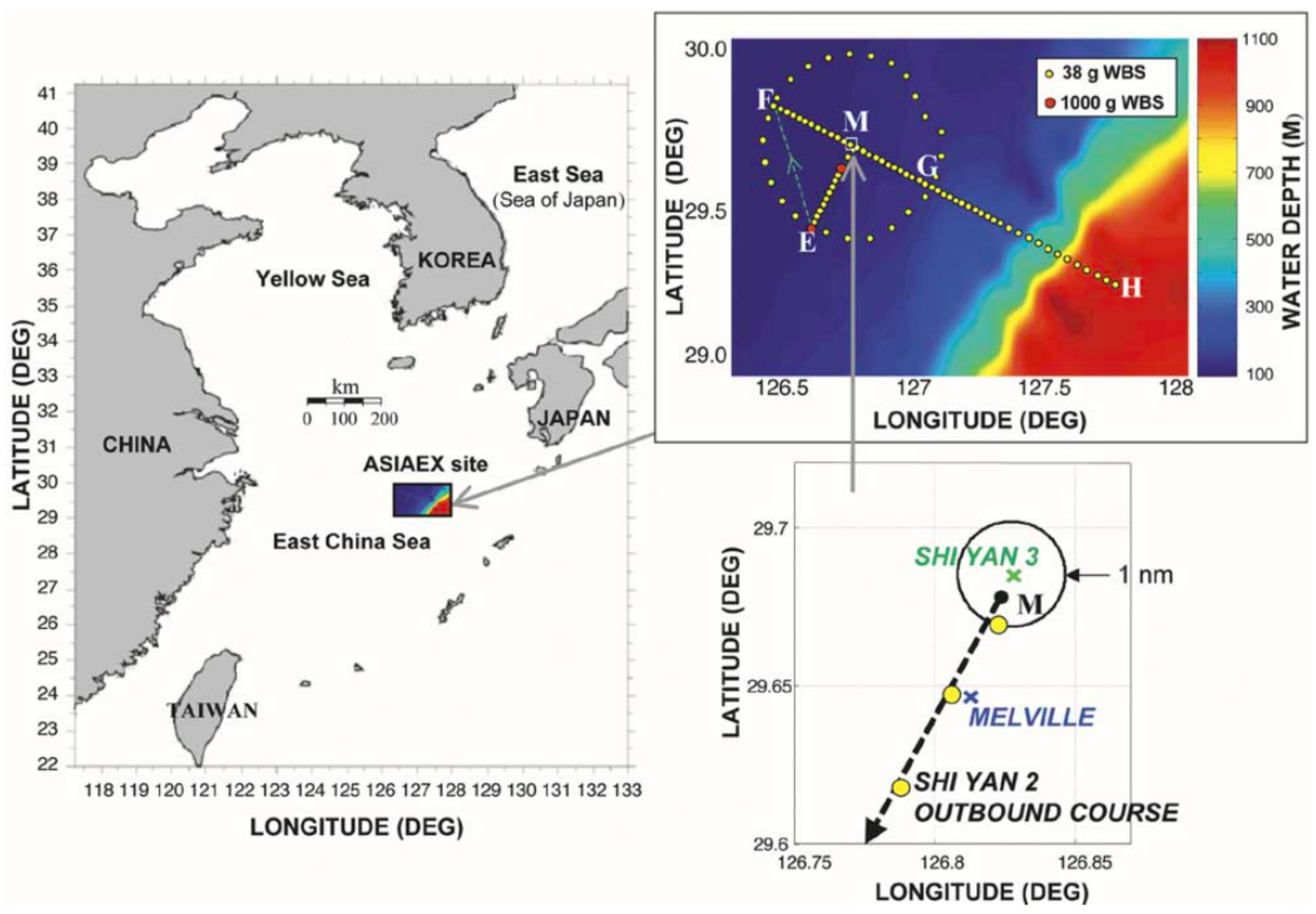

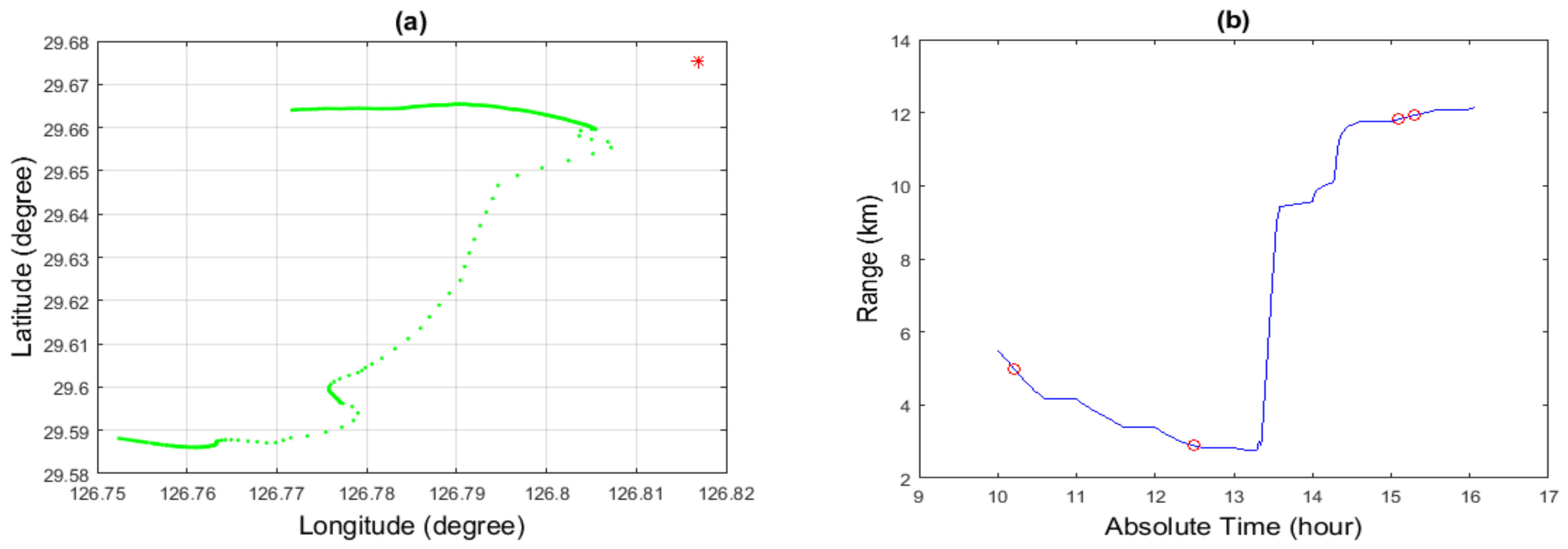
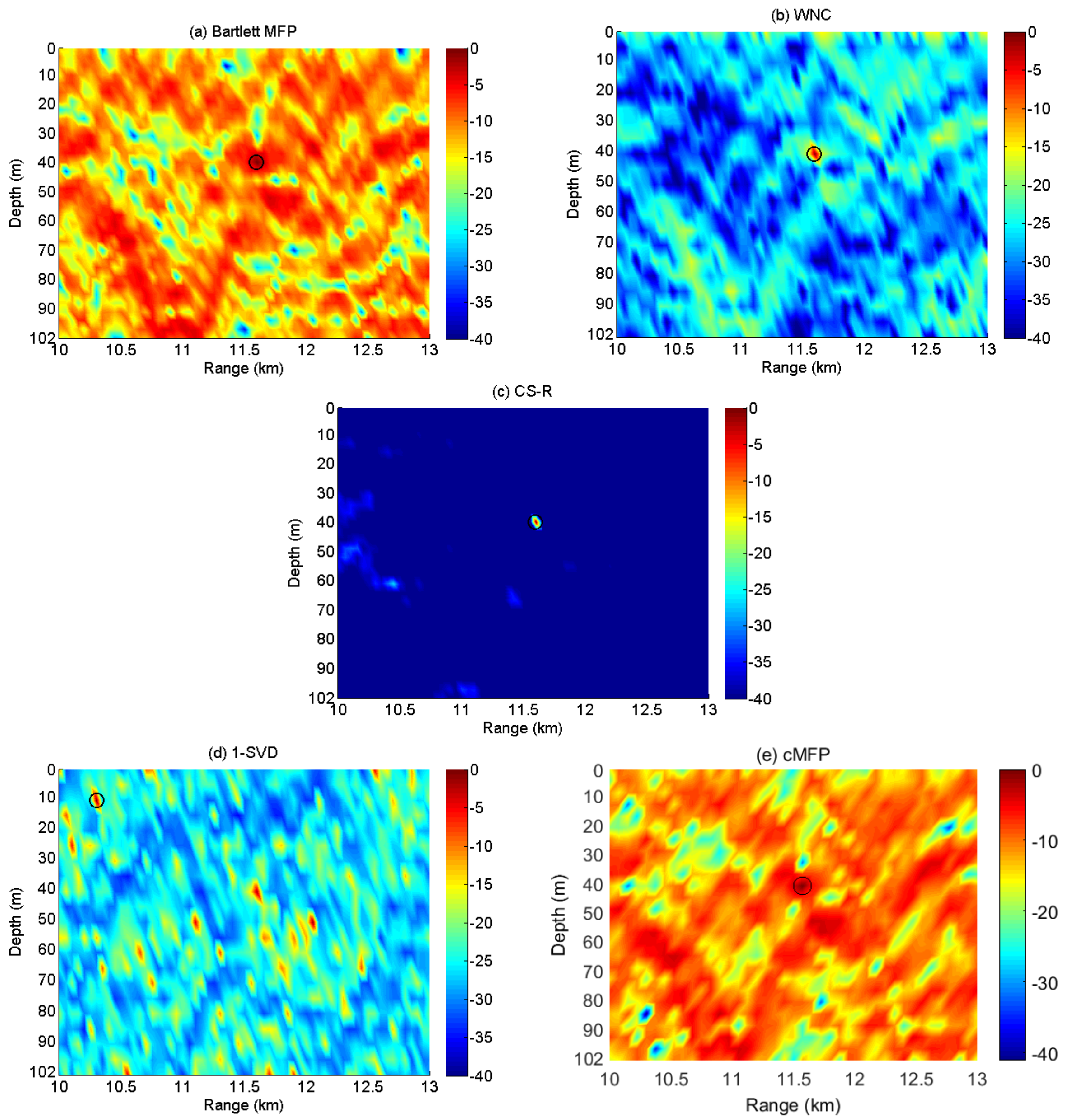

© 2019 by the authors. Licensee MDPI, Basel, Switzerland. This article is an open access article distributed under the terms and conditions of the Creative Commons Attribution (CC BY) license (http://creativecommons.org/licenses/by/4.0/).
Share and Cite
Zhao, H.; Irshad, M.J.; Shi, H.; Xu, W. Passive Source Localization Using Compressive Sensing. Sensors 2019, 19, 4522. https://doi.org/10.3390/s19204522
Zhao H, Irshad MJ, Shi H, Xu W. Passive Source Localization Using Compressive Sensing. Sensors. 2019; 19(20):4522. https://doi.org/10.3390/s19204522
Chicago/Turabian StyleZhao, Hangfang, M. Jehanzeb Irshad, Huihong Shi, and Wen Xu. 2019. "Passive Source Localization Using Compressive Sensing" Sensors 19, no. 20: 4522. https://doi.org/10.3390/s19204522
APA StyleZhao, H., Irshad, M. J., Shi, H., & Xu, W. (2019). Passive Source Localization Using Compressive Sensing. Sensors, 19(20), 4522. https://doi.org/10.3390/s19204522




